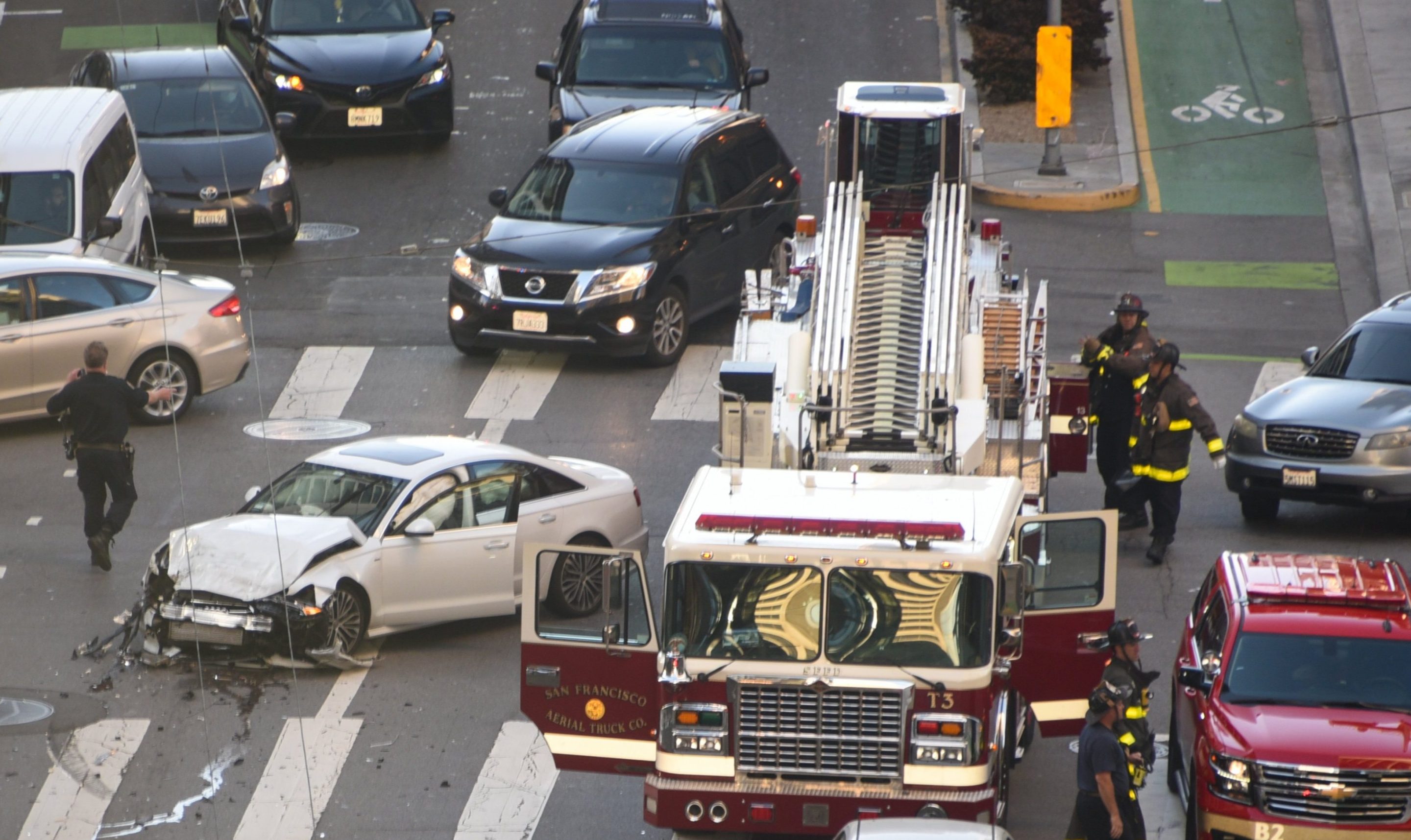Note: GJEL Accident Attorneys regularly sponsors coverage on Streetsblog San Francisco and Streetsblog California. Unless noted in the story, GJEL Accident Attorneys is not consulted for the content or editorial direction of the sponsored content.
I live on a high-injury network street in San Francisco, one of the 13 percent of street miles where 75 percent of serious traffic injuries and deaths occur. In 2014, San Francisco signed onto Vision Zero, a strategy to eliminate all traffic fatalities and severe injuries, while increasing safe, healthy, equitable mobility for all.
The city has made no progress toward these goals.
There are three things that the city could do within weeks that would make a demonstrable impact on pedestrian safety. These are not controversial and are proven to work. In fact, when they are occasionally employed in San Francisco they use city staff to implement, so there isn’t even a particularly legitimate cost argument for why these can not be done immediately.
- Prohibitions on right turn on red at every high injury network intersection.
- Pedestrian bulb-outs by default on all high-injury network corners. Critically, this will require the removal of rush hour-only lanes, and dedicated turn pockets on arterials (these induce speeding, and often prevent pedestrian bulb-outs from being installed). Should this work be limited to just paint and posts, as we are led to believe are the only materials up for the job? No.
- Signal re-timing to slow traffic on all high-injury network arterials.
The City was able to do these things quickly in the Tenderloin, a hot spot of pedestrian danger. It took a coalition of neighborhood residents, community-based groups, and professional advocacy groups such as Walk SF and the San Francisco Bicycle Coalition. And of course, they had the support of then-supervisor Matt Haney.
Taking these steps immediately can’t really be controversial, can it? So why aren’t we doing them everywhere?
Two bonus ideas that are necessary, but arguably more complex, and warrant a little more planning before moving ahead with:
- Traffic lane removal on multi-lane one-way arterials on the high injury network: streets like Fell, Oak, Lombard, Bush, Pine, Gough, and Franklin. SFMTA knows which ones these are, as they are not engineered for pedestrians and it shows in the data. Lane removal will allow space to re-engineer these spaces, slow traffic speed and volume, and make these streets more liveable.
- Transferring more of the responsibility for traffic enforcement to automated enforcement. Since the SFPD data shows that the department has largely given up on enforcement, going from 12,000 monthly focus on five actions per month in 2014 to less than 400 per month this year.
Why not transfer more of this responsibility and funding to adding more red light cameras immediately, the one technology the City has authority for? Historically this was at 40+ intersections, and now we’re awaiting red light cameras at a measly eight additional intersections (currently at only 13) and that’s taken years.
That’s my proposal, which the Board of Supervisors, Mayor, and City Departments can work to implement immediately. After all, it’s an official city and SFMTA policy that “Decisions regarding the use of limited public street and sidewalk space shall encourage the use of public rights of way by pedestrians, bicyclists, and public transit, and shall strive to reduce traffic and improve public health and safety.”





